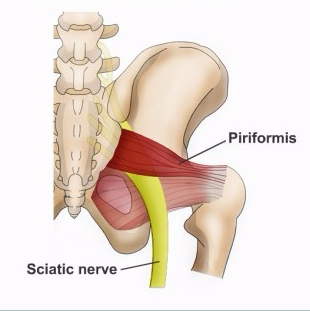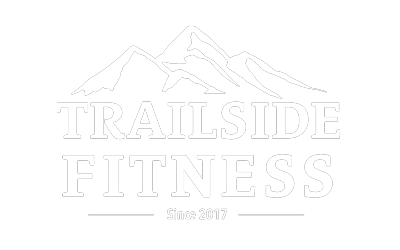Highlights
- The sciatic nerve is quite large and feeds the lower half of the body
- Nerve flossing can help reduce symptoms
- Strength and stretching will help get you back on your feet
Anatomy

The Sciatic nerve is huge! Where it exits through you hip bone it’s about as big around as your pinky finger. This single nerve is basically the trunk from which all leg muscles receive their signal from the spinal cord to contract.
What makes the Sciatic nerve different is that many smaller nerves combine together to form it. Once it passes through the hip bones, it starts to branch out more to feed the muscles.
These smaller nerves that exit the spinal column do so through tiny holes called foramen.
Between the bones in the spine are thick discs that absorb shock and help maintain the foramen opening where the smaller nerve exits. This is important because if that hole gets blocked, the nerve becomes irritated.
Nerves have been known to flare up if other nearby nerves are irritated. Even if there is no blockage or reason for being irritated, a neighbor nerve may simply be inflamed which makes the problem more complex.
Download the free article on ways that you can improve your odds of being successful during your through hike!
What Does This Mean?
There is not a lot of wiggle room where that nerve needs to exit the foramen, and if a problem occurs, like a bulging or herniated disc, it will press the nerve and restrict its movement at the foramen. Nerves don’t really stretch, only about 1-2% has been found in research.
 The Sciatic nerve also passes under the Piriformis muscle. If the Piriformis is tight, it acts like a clamp on the Sciatic nerve limiting any movement.
The Sciatic nerve also passes under the Piriformis muscle. If the Piriformis is tight, it acts like a clamp on the Sciatic nerve limiting any movement.
This clamp creates a rather uncomfortable electric/tingling feeling that you may feel down to your feet. Let’s take a look at how to address finding relief.
Nerve flossing is an easy way to help address a restricted Sciatic nerve, along with stretching for the Piriformis muscle.
Exercises & Stretches
The stretches are great for mornings and nights on the trail, but the exercises will serve you best before you go.
Sciatic Nerve Floss
If a nerve is trapped, you can’t “stretch” it free. You have to “floss” it free. This video will help explain nerve flossing and give you examples of how best to perform it.
Piriformis Stretch
The sciatic nerve either runs under or through the Piriformis muscle for most of us. When the muscle gets tight, it can clamp down on the sciatic nerve causing the pain and electric feelings down into the foot. Combined with the nerve flossing video above, this should help relieve symptoms.
Angry Cat, Happy Cat
Angry Cat, Happy Cat- this one was also featured in our Deep Dive Series for the Low Back. Simple and effective for maintaining spinal health.
Bridge
Bridges are great exercises to help build core strength and glute strength. She does a great job walking you through this simple exercise and even gives you a progression if it’s too easy.
Planks
Planks are another great exercise to add in for a strong core that will support your spine. You have probably done these before, but pay attention to the cues in the video. Engaging to bring the elbows and toes together is the key to making this exercise effective.
While by no means a quick fix, these simple exercises, and stretches should help you if there is a flare up while out hiking.
If you have Sciatic issues now, be sure to build a strong core and hip muscles to help support your spine. Pack weight will matter, as will posture to ensure you are loading your spine correctly and not creating a disc bulge.
You can reach me info@trailsidefitness.com with any injury issues, past or present that you feel will impact your hike. Training questions are also welcome – I am happy to help!
Be sure to like our Facebook page and follow us on Instagram and Twitter!

Recent Comments